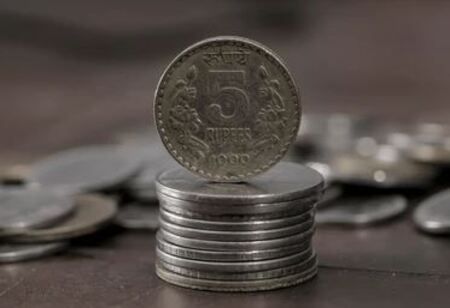
Rupee Falls to a Three-Week Low as US Tariffs


As broad US tariffs, including a 104 percent levy on China, went into force, the Indian rupee fell to a three-week low today, mirroring the weakening of the Chinese yuan and escalating concerns about a slowdown in the global economy.
It fell from 85.83 on Monday (April 7) and 85.23 on Friday (April 4) to open at 85.91 versus the dollar.
In the meantime, the Reserve Bank of India lowered its benchmark repo rate for the second time in a row and loosened its monetary policy stance, indicating that more cuts may be forthcoming as it attempts to stimulate a faltering economy in the face of US tariffs.
A dealer at a state-run bank stated that although the RBI's decrease was widely anticipated, the shift in policy was "slightly dovish" and put some additional pressure on the rupee.
As investors continued to be concerned about the development of the trade war, the onshore Chinese yuan sank to a 19-month low versus the dollar overnight, while its offshore counterpart fell to a record low.
According to reports, China's central bank has urged big state-owned banks to cut back on their purchases of US dollars and will not let significant yuan falls in spite of the pressure from tariffs.
The key equity indices of India, the Nifty 50 and the BSE Sensex, finished down.
As the US saw a sharp selloff, Indian government bonds outperformed their regional counterparts.
Treasuries raised fears that investors are selling the dollar and even their safest assets, and that hedge funds are unwinding leveraged positions.
Also Read: Transition from Trouper to Entrepreneurs Making Waves in the Industry
During trading in Asia, the yield on the 10-year US Treasury increased to 4.5150 percent.